Last Updated on June 21, 2023
Web pages are built with HTML, which specifies the content of a page. CSS (Cascading Style Sheets) is a separate language which specifies a page’s appearance.
CSS code is made of static rules. Each rule takes one or more selectors and gives specific values to a number of visual properties. Those properties are then applied to the page elements indicated by the selectors.
Here’s our recommended books to learn CSS.
1. CSS Animation 101 by Donovan Hutchinson
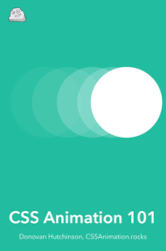 This book gives you a light introduction to the topic, combining theory with practical lessons.
This book gives you a light introduction to the topic, combining theory with practical lessons.
You’ll learn how, and why to use animation on your web pages and hopefully be inspired to try it on your own projects.
After reading the book you should have a sound understanding of CSS animations as well as the tools to create and experiment.
Create your own working environment and look at many examples of animation along the way.
2. SMACSS by Jonathan Snook
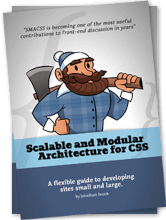
This useful book covers a number of topics related to CSS architecture.
Chapters cover:
- Core:
- Categorizing CSS Rules.
- Base Rules.
- Layout Rules.
- Module Rules.
- State Rules.
- Theme Rules.
- Changing State.
- Aspects of SMACSS:
- Depth of Applicability.
- Selector Performance.
- HTML5 and SMACSS.
- Prototyping.
- Preprocessors.
- Drop the Base.
- The Icon Module.
- Complicated Inheritance.
- Screencast: Applying the Principles.
- Screencast: Avoiding Content-specific Context.
3. Essential CSS by various authors
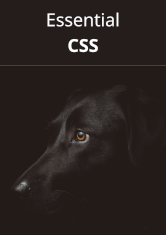 Essential CSS is written to provide clear and concise explanation of topics for both beginner and advanced programmers.
Essential CSS is written to provide clear and concise explanation of topics for both beginner and advanced programmers.
Most examples are linked to online playground that allows you to change the code and re-run it.
The content is based on now abandoned StackOverflow Documentation project. It has been heavily edited and improved.
4. Google HTML/CSS Style Guide
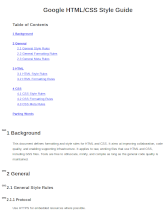 Google HTML/CSS Style Guide defines formatting and style rules for HTML and CSS.
Google HTML/CSS Style Guide defines formatting and style rules for HTML and CSS.
It aims at improving collaboration, code quality, and enabling supporting infrastructure. It applies to raw, working files that use HTML and CSS, including GSS files.
Tools are free to obfuscate, minify, and compile as long as the general code quality is maintained.
5. CSS3 Succinctly by Peter Shaw
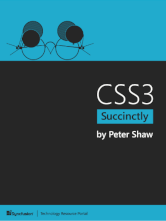 CSS3 Succinctly begins with a basic CSS refresher.
CSS3 Succinctly begins with a basic CSS refresher.
Chapters cover:
- New Selectors.
- New Pseudo Selectors.
- Eye Candy.
- Color.
- Web Fonts.
- Generated Content and Calculations.
- The Mixed Bag of Tricks.
All books in this series:
| Free Programming Books | |
|---|---|
| Ada | ALGOL-like programming language, extended from Pascal and other languages |
| Agda | Dependently typed functional language based on intuitionistic Type Theory |
| Arduino | Inexpensive, flexible, open source microcontroller platform |
| Assembly | As close to writing machine code without writing in pure hexadecimal |
| Awk | Versatile language designed for pattern scanning and processing language |
| Bash | Shell and command language; popular both as a shell and a scripting language |
| BASIC | Beginner’s All-purpose Symbolic Instruction Code |
| C | General-purpose, procedural, portable, high-level language |
| C++ | General-purpose, portable, free-form, multi-paradigm language |
| C# | Combines the power and flexibility of C++ with the simplicity of Visual Basic |
| Clojure | Dialect of the Lisp programming language |
| ClojureScript | Compiler for Clojure that targets JavaScript |
| COBOL | Common Business-Oriented Language |
| CoffeeScript | Transcompiles into JavaScript inspired by Ruby, Python and Haskell |
| Coq | Dependently typed language similar to Agda, Idris, F* and others |
| Crystal | General-purpose, concurrent, multi-paradigm, object-oriented language |
| CSS | CSS (Cascading Style Sheets) specifies a web page’s appearance |
| D | General-purpose systems programming language with a C-like syntax |
| Dart | Client-optimized language for fast apps on multiple platforms |
| Dylan | Multi-paradigm language supporting functional and object-oriented coding |
| ECMAScript | Best known as the language embedded in web browsers |
| Eiffel | Object-oriented language designed by Bertrand Meyer |
| Elixir | Relatively new functional language running on the Erlang virtual machine |
| Erlang | General-purpose, concurrent, declarative, functional language |
| F# | Uses functional, imperative, and object-oriented programming methods |
| Factor | Dynamic stack-based programming language |
| Forth | Imperative stack-based programming language |
| Fortran | The first high-level language, using the first compiler |
| Go | Compiled, statically typed programming language |
| Groovy | Powerful, optionally typed and dynamic language |
| Haskell | Standardized, general-purpose, polymorphically, statically typed language |
| HTML | HyperText Markup Language |
| Icon | Wide variety of features for processing and presenting symbolic data |
| J | Array programming language based primarily on APL |
| Java | General-purpose, concurrent, class-based, object-oriented, high-level language |
| JavaScript | Interpreted, prototype-based, scripting language |
| Julia | High-level, high-performance language for technical computing |
| Kotlin | More modern version of Java |
| LabVIEW | Designed to enable domain experts to build power systems quickly |
| LaTeX | Professional document preparation system and document markup language |
| Lisp | Unique features - excellent to study programming constructs |
| Logo | Dialect of Lisp that features interactivity, modularity, extensibility |
| Lua | Designed as an embeddable scripting language |
| Markdown | Plain text formatting syntax designed to be easy-to-read and easy-to-write |
| Objective-C | Object-oriented language that adds Smalltalk-style messaging to C |
| OCaml | The main implementation of the Caml language |
| Pascal | Imperative and procedural language designed in the late 1960s |
| Perl | High-level, general-purpose, interpreted, scripting, dynamic language |
| PHP | PHP has been at the helm of the web for many years |
| PostScript | Interpreted, stack-based and Turing complete language |
| Prolog | A general purpose, declarative, logic programming language |
| PureScript | Small strongly, statically typed language compiling to JavaScript |
| Python | General-purpose, structured, powerful language |
| QML | Hierarchical declarative language for user interface layout - JSON-like syntax |
| R | De facto standard among statisticians and data analysts |
| Racket | General-purpose, object-oriented, multi-paradigm, functional language |
| Raku | Member of the Perl family of programming languages |
| Ruby | General purpose, scripting, structured, flexible, fully object-oriented language |
| Rust | Ideal for systems, embedded, and other performance critical code |
| Scala | Modern, object-functional, multi-paradigm, Java-based language |
| Scheme | A general-purpose, functional language descended from Lisp and Algol |
| Scratch | Visual programming language designed for 8-16 year-old children |
| SQL | Access and manipulate data held in a relational database management system |
| Standard ML | General-purpose functional language characterized as "Lisp with types" |
| Swift | Powerful and intuitive general-purpose programming language |
| Tcl | Dynamic language based on concepts of Lisp, C, and Unix shells |
| TeX | Markup and programming language - create professional quality typeset text |
| TypeScript | Strict syntactical superset of JavaScript adding optional static typing |
| Vala | Object-oriented language, syntactically similar to C# |
| VHDL | Hardware description language used in electronic design automation |
| VimL | Powerful scripting language of the Vim editor |
| XML | Rules for defining semantic tags describing structure ad meaning |
